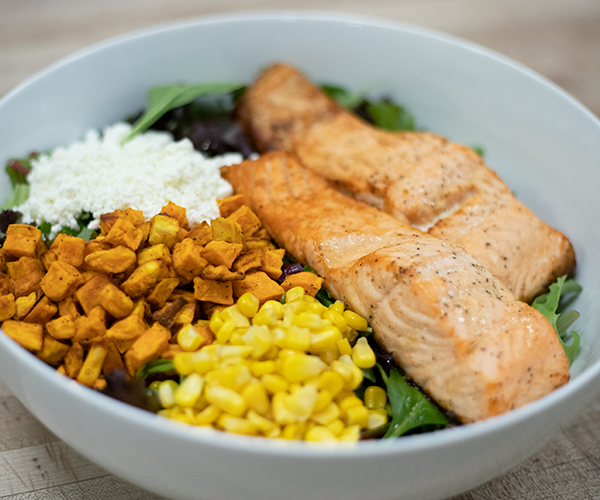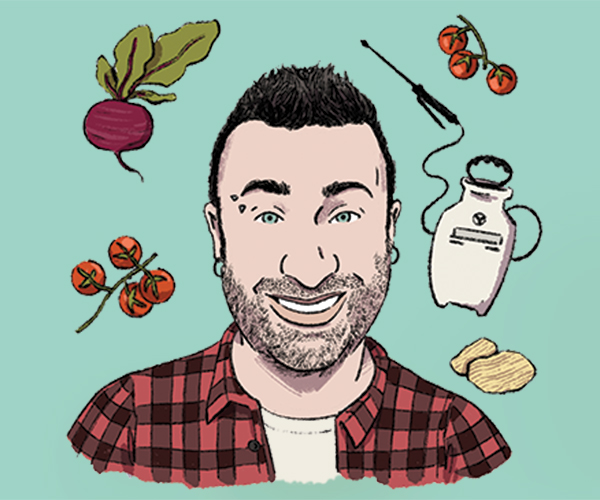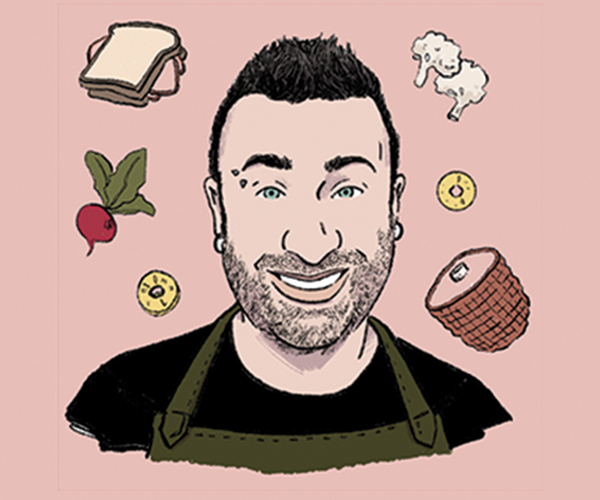Knife Skills
Jeff Fisher of Lago says it’s incredibly important for home chefs to know how to use a knife properly, and maintain sharp knives. “Sometimes I’ll go to people’s houses and if I want to use a knife, it’s like you couldn’t commit suicide if you were trying.”
1. Always keep your fingers curled back when cutting and don’t dangle your thumb.
2. Pay attention to what you’re doing.
3. Always have a sharp knife — a dull knife makes work harder and is more dangerous.
4. Try the tomato test — run the knife across a tomato. If it easily pierces the skin, the knife is sharp enough. If not, use a knife sharpener first.
5. Don’t throw knives around the kitchen. (We hope this one is obvious!)
Jeff Fisher of Lago says it’s incredibly important for home chefs to know how to use a knife properly, and maintain sharp knives. “Sometimes I’ll go to people’s houses and if I want to use a knife, it’s like you couldn’t commit suicide if you were trying.”
1. Always keep your fingers curled back when cutting and don’t dangle your thumb.
2. Pay attention to what you’re doing.
3. Always have a sharp knife — a dull knife makes work harder and is more dangerous.
4. Try the tomato test — run the knife across a tomato. If it easily pierces the skin, the knife is sharp enough. If not, use a knife sharpener first.
5. Don’t throw knives around the kitchen. (We hope this one is obvious!)
Sauté Technique
“Proper sauté technique is probably the thing most people don’t know how to do, but if they knew, it makes all their food great,” says Doug Katz of Fire Food & Drink.
1. Use a good quality, heavy sauté pan and either clarified butter (butter with the milk solids removed) or an oil with a high smoke point (vegetable oil, peanut oil, olive oil that is NOT extra virgin)
2. Heat the pan on high heat, then pour in oil or butter, about 2 ounces for a 10-inch sauté pan, just enough to coat the bottom.
3. Make sure whatever you’re putting in the pan is patted dry — water will make the oil spit more. Make sure a fan or vent is on.
4. Season food, then drop into the oil away from your body. Do not crowd the pan. Flip when golden brown. When the other side is golden brown, turn down heat to complete cooking or finish in a 375 degree oven.
5. Sautéing works for proteins, vegetables and more — just use the same philosophy: high heat, little oil.
“Proper sauté technique is probably the thing most people don’t know how to do, but if they knew, it makes all their food great,” says Doug Katz of Fire Food & Drink.
1. Use a good quality, heavy sauté pan and either clarified butter (butter with the milk solids removed) or an oil with a high smoke point (vegetable oil, peanut oil, olive oil that is NOT extra virgin)
2. Heat the pan on high heat, then pour in oil or butter, about 2 ounces for a 10-inch sauté pan, just enough to coat the bottom.
3. Make sure whatever you’re putting in the pan is patted dry — water will make the oil spit more. Make sure a fan or vent is on.
4. Season food, then drop into the oil away from your body. Do not crowd the pan. Flip when golden brown. When the other side is golden brown, turn down heat to complete cooking or finish in a 375 degree oven.
5. Sautéing works for proteins, vegetables and more — just use the same philosophy: high heat, little oil.
Proper Seasoning
“I feel that a lot of people don’t season when they cook, and then they wonder why their food doesn’t taste like food they eat at restaurants,” says Brandt Evans of Blue Canyon Kitchen & Tavern.
1. Make a mixture of four parts salt to one part pepper and have it in a container near the stove, so you don’t forget to season.
2. Kosher salt is better than iodized table salt for most cooking.
3. Don’t season a protein too early before you cook — it will draw out too much moisture.
4. Season right before you cook to allow flavors to develop.
5. Don’t season at the end of cooking — it’s too late.
“I feel that a lot of people don’t season when they cook, and then they wonder why their food doesn’t taste like food they eat at restaurants,” says Brandt Evans of Blue Canyon Kitchen & Tavern.
1. Make a mixture of four parts salt to one part pepper and have it in a container near the stove, so you don’t forget to season.
2. Kosher salt is better than iodized table salt for most cooking.
3. Don’t season a protein too early before you cook — it will draw out too much moisture.
4. Season right before you cook to allow flavors to develop.
5. Don’t season at the end of cooking — it’s too late.
Whipped Potatoes
“Life is too short. There’s too many fad
diets. Whipped potatoes are what I consider Midwestern comfort food,” says Rocco Whalen of Fahrenheit. “Have a second helping.”
1. Boil skinned potatoes in saltwater. When fork-tender, finish the potatoes in a warm oven on a baking sheet to get the moisture out.
2. When mashing, use equal parts whole butter and heavy cream. “The more the merrier.”
3. Enhance potatoes with a flavor such as truffles or cheese. Whalen likes aligot, a “melty and pleasant” Swiss cheese.
4. Make slightly ahead of time so the flavor components can marry and develop.
5. Consider eating with an 18-ounce long-bone Delmonico and red wine or Belgian White Ale.
“Life is too short. There’s too many fad
diets. Whipped potatoes are what I consider Midwestern comfort food,” says Rocco Whalen of Fahrenheit. “Have a second helping.”
1. Boil skinned potatoes in saltwater. When fork-tender, finish the potatoes in a warm oven on a baking sheet to get the moisture out.
2. When mashing, use equal parts whole butter and heavy cream. “The more the merrier.”
3. Enhance potatoes with a flavor such as truffles or cheese. Whalen likes aligot, a “melty and pleasant” Swiss cheese.
4. Make slightly ahead of time so the flavor components can marry and develop.
5. Consider eating with an 18-ounce long-bone Delmonico and red wine or Belgian White Ale.



